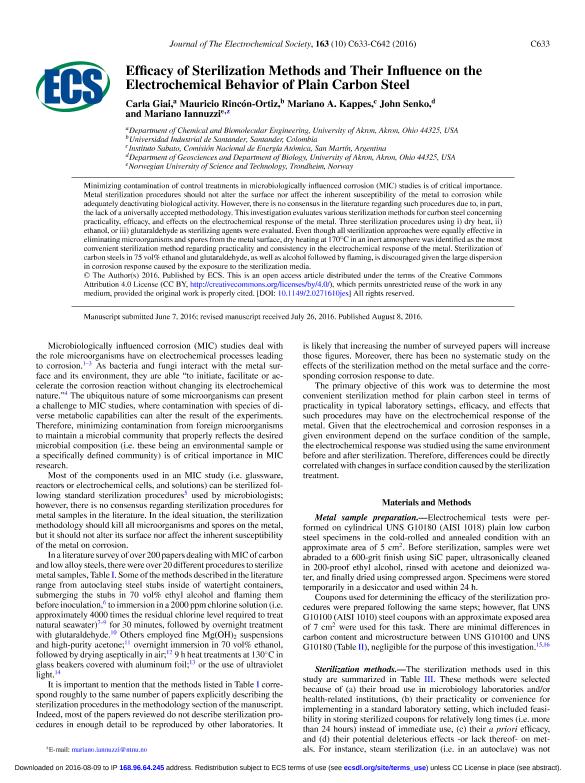Artículo
Efficacy of Sterilization Methods and Their Influence on the Electrochemical Behavior of Plain Carbon Steel
Fecha de publicación:
08/2016
Editorial:
Electrochemical Society
Revista:
Journal of the Electrochemical Society
ISSN:
0013-4651
Idioma:
Inglés
Tipo de recurso:
Artículo publicado
Clasificación temática:
Resumen
Minimizing contamination of control treatments in microbiologically influenced corrosion (MIC) studies is of critical importance. Metal sterilization procedures should not alter the surface nor affect the inherent susceptibility of the metal to corrosion while adequately deactivating biological activity. However, there is no consensus in the literature regarding such procedures due to, in part, the lack of a universally accepted methodology. This investigation evaluates various sterilization methods for carbon steel concerning practicality, efficacy, and effects on the electrochemical response of the metal. Three sterilization procedures using i) dry heat, ii) ethanol, or iii) glutaraldehyde as sterilizing agents were evaluated. Even though all sterilization approaches were equally effective in eliminating microorganisms and spores from the metal surface, dry heating at 170°C in an inert atmosphere was identified as the most convenient sterilization method regarding practicality and consistency in the electrochemical response of the metal. Sterilization of carbon steels in 75 vol% ethanol and glutaraldehyde, as well as alcohol followed by flaming, is discouraged given the large dispersion in corrosion response caused by the exposure to the sterilization media.
Archivos asociados
Licencia
Identificadores
Colecciones
Articulos(SEDE CENTRAL)
Articulos de SEDE CENTRAL
Articulos de SEDE CENTRAL
Citación
Giai, Carla; Rincón Ortiz, Mauricio; Kappes, Mariano Alberto; Senko, John; Iannuzzi, Mariano; Efficacy of Sterilization Methods and Their Influence on the Electrochemical Behavior of Plain Carbon Steel; Electrochemical Society; Journal of the Electrochemical Society; 163; 10; 8-2016; C633-C642
Compartir
Altmétricas




